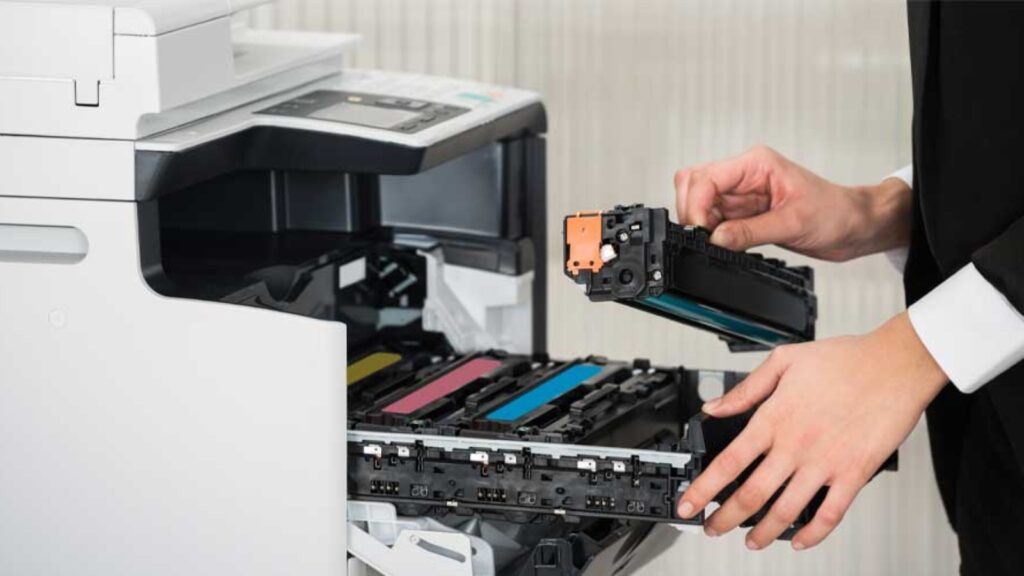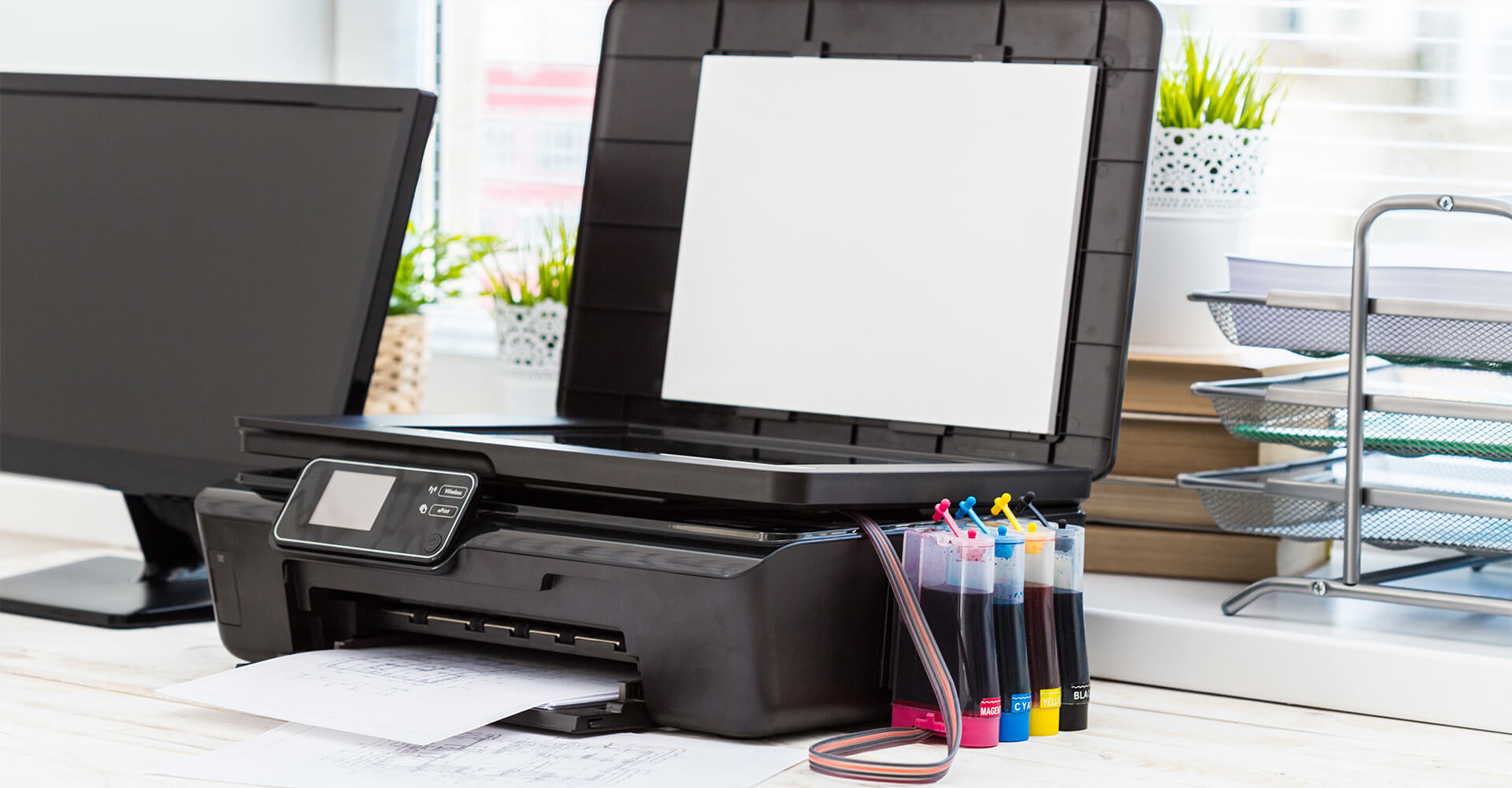Printers can display an infuriating scope of issues to buyers. They go through ink excessively quickly, their yield quality might be imperfect, they may print at a snail’s pace, and the paper may frequently stick. Now and again, they’ll simply decline to print by any means and simply stay there while you smolder. Luckily, the number of times these circumstances are resolvable. Here we portray normal printer issues, and give tips on fathoming them—or in any event, let you realize when to quit and call technical support.
1. My printer won’t print.
On the off chance that there are no mistake messages guiding you toward the issue, check to make sure that the printer is as yet associated, by means of a USB or Ethernet link or—if a remote model—that the Wi-Fi is empowered and that you’re associated with the correct system. The printer driver and programming should be introduced on the PC you need to print from. It’s conceivable that the driver has turned out to be debated; it ought to be reinstalled; check the producer’s download page for the most recent form. On the off chance that despite everything it doesn’t work, look at the investigating segment in the printer’s User Manual, and if require, contact technical support.
2. Wi-Fi printing takes excessively long.
Putting your printer near your switch should expand throughput and lessen printing time, however, there are different approaches to enhance Wi-Fi execution while holding the adaptability of printer situation that remote printing guarantees. Make sure your switch is satisfactory—it should bolster 802.11n and offer the 5GHz band and in addition 2.4 GHz—and that its firmware is cutting-edge. You could include a remote extender or a repeater to expand execution if required.
See also: Benefits of ranking your eCommerce website using SEO

3. I can’t print from my cell phone to my printer.
Regardless of whether your printer is old or has a non-Wi-Fi display, you most likely can print from a telephone or tablet to it. Precisely what you’ll have the capacity to print relies upon your specific circumstance.
Most new Wi-Fi printers bolster AirPrint, which gives clients of iOS gadgets a chance to print to them (given that both the iPhone, iPad, or iPod contact and printer are on a similar Wi-Fi arrangement). Almost all significant printer producers have discharged applications so that iPhone, iPad, Android, and now and again Windows Phone and BlackBerry clients can print from their gadgets to that maker’s ongoing models, and some outsider applications let you print to a more extensive scope of printers. Numerous producers’ and outsider applications offer a more extensive decision of print alternatives than AirPrint, and many can start checks also.
You can print to a non-Wi-Fi printer, as long as your system has a remote passage, by utilizing one of the projects that expects you to introduce a utility on an organized PC. Printopia requires a Mac, while Presto! (some time ago Fingerprint 2) works either with Macs or Windows machines. Cloud printing administrations, for example, Cortado ThinPrint Cloud Printer and Google Cloud Printer work crosswise over stages and gadget types and with non-WiFi printers too. These arrangements will in general be restricted to printing from a select arrangement of applications.
Some new remote printers bolster printing by means of Wi-Fi Direct, a convention that gives two perfect gadgets a chance to make an immediate remote association without requiring a remote passageway. Albeit numerous ongoing Android gadgets bolster Wi-Fi Direct, iPhones don’t.
Some HP and Kodak printers bolster printing by means of email. In either case, your printer gets doled out an email address, and you can email connected archives to it, and the printer will naturally print them out. Not at all like alternate techniques here, this doesn’t require a WiFi interface, just an Internet association.
4. My printer asserts it’s coming up short on ink, yet despite everything, I can print. Would it be a good idea for me too?
You needn’t hurry to supplant cartridges on the off chance that you get a low-ink cautioning. About every single ongoing printer has a type of ink tank level marker and will issue alerts when your ink is low. The precision of these alerts fluctuates broadly among producers and models. Now and then you’ll get low-ink admonitions a long time before the ink level is basically low.
The best way to decide whether this is the situation is by proceeding to print past the notice and perceiving to what extent it takes until yield quality begins to corrupt or the printer closes down, constraining you to supplant at least one cartridge. At that point, you’ll know whether the admonitions are genuine or untimely, and have a superior thought of to what extent to hold up until the point when you truly need to supplant that ink. In case you’re beginning extensive and essential print work, however, you might need to decide in favor of alert and change the important ink tank(s) in any case.
See also: Childcare workers and search engine optimization services
5. My inkjet photographs look lousy.
In case you’re not happy with your photograph print quality, ensure that you’re imprinting on the correct paper. By and large, your printer producer’s marked photograph paper will be superior to anything outsider papers, and they may suggest a specific paper for your printer. In your product settings, make certain that you’ve chosen the paper (or paper type) you’re utilizing, and that it’s set for photograph printing. On the off chance that there’s a brilliant photograph setting, attempt that. Additionally, go through a spout cleaning and print head arrangement.
In case you’re running low on one shade of ink, you may see staining in your prints—it’s an ideal opportunity to change the ink tank being referred to. Likewise, particulates in the ink will in the long run settle and can cause stopping up, so you’ll need to supplant old tanks, regardless of whether they’re incompletely or generally loaded with ink.
6. My printer’s excessively moderate.
A few printers are cheetahs and some are sloths, yet you might have the capacity to get even an ease back printer to accelerate a bit. Except if you require superb yield for a formal report or something like that, print in draft mode (or whatever the most reduced quality setting is). Keep away from duplex (two-sided) printing, as the printer needs to flip the record over to print on the two sides, which can fundamentally back it off. On the off chance that you can pick between printer drivers, print from a host-based or PCL driver; in spite of the fact that PostScript drivers can print photographs at higher quality, it might come to the detriment of speed.
7. I get a lot of paper jams.
Luckily, paper jams are far less regular than even 10 years back, however, regardless they can occur. By a long shot, the most well-known reason for paper jams is paper misalignment. Make sure to square off the heap of paper before embeddings it in the plate, make certain that the aides are flush with the paper, and stay away from over-filling the plate. On the off chance that this doesn’t tackle the issue, check the investigating area of the printer’s client manual, and if required, contact the maker’s technical support.
8. The printed content looks lousy.
Printers fluctuate broadly in content quality; inkjets by and large offer content reasonable for home, school, or easygoing business use, while most lasers are equipped for printing fresh content for increasingly proficient-looking reports. We rate content quality for every printer in our audits. In any case, expecting you’ve seen a steady or sudden corruption in quality, there are a few things you can attempt that may resolve it.
Regardless of whether inkjet or laser, ensure your print settings are right. In case you’re in draft mode, change to higher quality mode (however it will back off your printing). Make sure that the paper type recorded on the screen matches what you’re imprinting on.
With laser printers, it might imply that the toner has settled; evacuate the cartridge(s) and shake a few times from side to side. Frequently, a cartridge will react to this, however in the long run it will come up short on toner and must be supplanted. For inkjets, you can attempt a spout cleaning and print head arrangement, which you can dispatch from the printer’s support menu. In the event that that doesn’t enable, you to can take a stab at supplanting cartridges also (however you’d presumably get a notice on the off chance that they were low).

